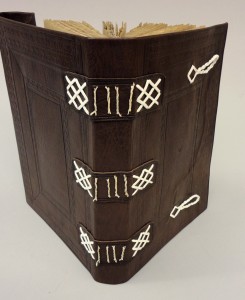Remix the Manuscript is an ongoing experiment in how digital technologies affect access and understanding of material culture. As people invent new tools and interfaces–and earlier ones become obsolete–the very nature of archives keeps changing. And so does what we think we know about the past.
We intend to study this process. We know that software and hardware determine what we can see and what even counts as information. But how, exactly, do these effects shape the knowledge that we are producing? Remix the Manuscript seeks answers to this question by focusing on the process of processing, so to speak. In concrete terms, our projects can be characterized as comparative data studies: what happens if we use several similar tools to ask the same question of the same data? In abstract and somewhat grandiose terms, our projects aspire to comparative epistemology: what happens to our ways of knowing if we use several similar tools to ask the same question of the same data? By applying multiple tools to the same data, we are investigating the shifting ecologies of digital space over time. We seek greater understanding of how technology shapes historical information. How are the tools we’re using affecting the knowledge we’re producing?
Our archive is not particularly famous or popular. This helps us stay focused on the tools rather than the content. We’ll be treating one document like an expandable database–a renewable source of many different kinds of information that can be displayed in many different ways.
The Dartmouth Brut Chronicle (Rauner Codex MS 003183) is a unique version of the Middle English Prose history of Britain. Nearly two hundred related copies of this chronicle exist today, each recounting Britain’s history from the arrival of Brutus from Troy (hence the name Brut) through the reign of King Arthur to various endpoints in the fifteenth century. The Brut narrative remained popular and even authoritative into the eighteenth century. A version of the text was edited by Friedrich Brie, published in 1906.
The Dartmouth Brut is thus part of a well-documented corpus of manuscripts, which will facilitate comparative projects on textual transmission, cultural geography, and modern archives. Other manuscripts in the corpus have also been digitized, so we can test principles of interoperability between archives. The chronicle text itself is something of a remix of sources whose structures can be explored with data processing tools. The chronicle genre, moreover, reflects the spirit of the research project—an ongoing narrative of events, questions, and detours.
The spirit of remix emphasizes process as much as product. It involves multiplicity and serendipity. It repurposes old things in new forms. Remix the Manuscript will include many different types of digital and material outputs, from textual analysis to artistic collage. Over time, we will explore the porous distinction between analysis and art that characterizes the humanities in digital times.
The book pictured here was made by Deborah Howe, the first remix of the Dartmouth Brut manuscript.

